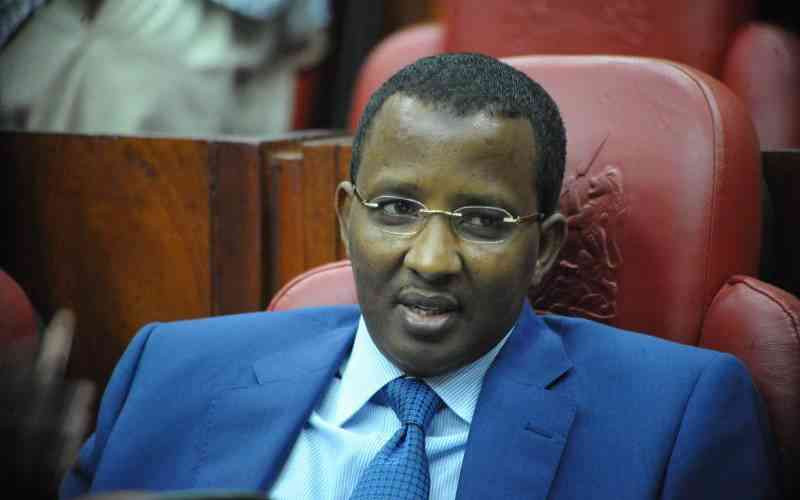Article 33 of the Kenyan Constitution guarantees freedom of expression while in Article 34, is enshrined the freedom of media.
Courtesy of a digital migration process that has evidently centralised TV distribution through Pan-Africa Network Group (PANG) and Signet, these guarantees are now under threat.
All Free-to-air TV channels in the country can essentially be controlled from only two central locations. Under digital migration, all Free-to-Air TV content in the country is now carried by either Signet or PANG. Signet, is a subsidiary of KBC and is therefore under direct control of the Government.
PANG on the other hand is Chinese and therefore answers directly to the Chinese government, which typically would not do anything to offend the Kenyan Government. This state of affairs must concern every Kenyan who values freedom of expression.
What happens on the day any of the 40+ channels on these platforms will be airing something the Government of the day may be uncomfortable with? Will they scramble the signal?
Will they jam it? Will they deteriorate the quality of the signal or knock off the sound? Will they allow it to run?
Remember, it takes only two buttons, one at KBC and the other at PANG to interfere with any content on all the channels even if the number of licensed FTA channels rises to 1,000.
Frequencies are a sensitive national resource. That is why strict licensing procedures always apply when it comes to how the frequencies are allocated and used.
In fact, the Government often does a background check on any company or individual seeking a broadcast frequency, to prevent any misuse such as dissemination of alarming information or spying (espionage).
That is why nations have strict rules when it comes to issuing such frequencies to non-citizen or foreign companies.
In Kenya, however, more than half of the available frequencies under digital migration, have been issued to a foreign company.
PANG is a Chinese company which got 120 out of the available 211 frequencies.
KBC, the public broadcaster was only allocated slightly more than 50. The Africa Digital Network, a consortium comprising of the Standard Group, Nation Media Group and Royal Media Services got only 21.
Where in the world does a foreign company get the lion's share of a country's frequencies?
Stay informed. Subscribe to our newsletter
Doesn't it concern anyone that only recently some foreigners were found in the country with hi-tech telecommunications gadgets whose purpose has not yet been established?
On copyright, many Kenyan content producers have celebrated digital migration as a sure way of expanding their horizons.
And they have good reason to believe that because that is the kind of opportunity that digital migration should bring forth if properly managed.
But in Kenya, these content producers might not enjoy the fruits of their labour.
This is because of a Supreme Court ruling that was interpreted by the Communications Authority to mean that anybody can carry any other person's content without consent and without paying for it.
PayTV companies Startimes and GoTV generally carry nearly all the free-to-air channels in the country. Many of them have either very loose agreements or none at all.
Yet, the PayTV platforms routinely overlay their advertising on any content on their platform.
If PayTVs are allowed to not only take advertising, but also do it on the basis of content they have not bought or got permission to use, how will the free-to-air broadcasters survive?
Where does the independent content producer get his or her money when an advertisement runs on their programme on a payTV platform with which they have no contract?
The single-most important change with digital migration is that you either have a TV fitted with a digital tuner or you buy a special decoder known as a Set-Top Box (STB) to connect to your existing analog TV, in order to continue watching television.
Why did we rush into a switch-off without pegging this to achievement of a specific number of set-top boxes in the market?
 The Standard Group Plc is a
multi-media organization with investments in media platforms spanning newspaper
print operations, television, radio broadcasting, digital and online services. The
Standard Group is recognized as a leading multi-media house in Kenya with a key
influence in matters of national and international interest.
The Standard Group Plc is a
multi-media organization with investments in media platforms spanning newspaper
print operations, television, radio broadcasting, digital and online services. The
Standard Group is recognized as a leading multi-media house in Kenya with a key
influence in matters of national and international interest.
 The Standard Group Plc is a
multi-media organization with investments in media platforms spanning newspaper
print operations, television, radio broadcasting, digital and online services. The
Standard Group is recognized as a leading multi-media house in Kenya with a key
influence in matters of national and international interest.
The Standard Group Plc is a
multi-media organization with investments in media platforms spanning newspaper
print operations, television, radio broadcasting, digital and online services. The
Standard Group is recognized as a leading multi-media house in Kenya with a key
influence in matters of national and international interest.







